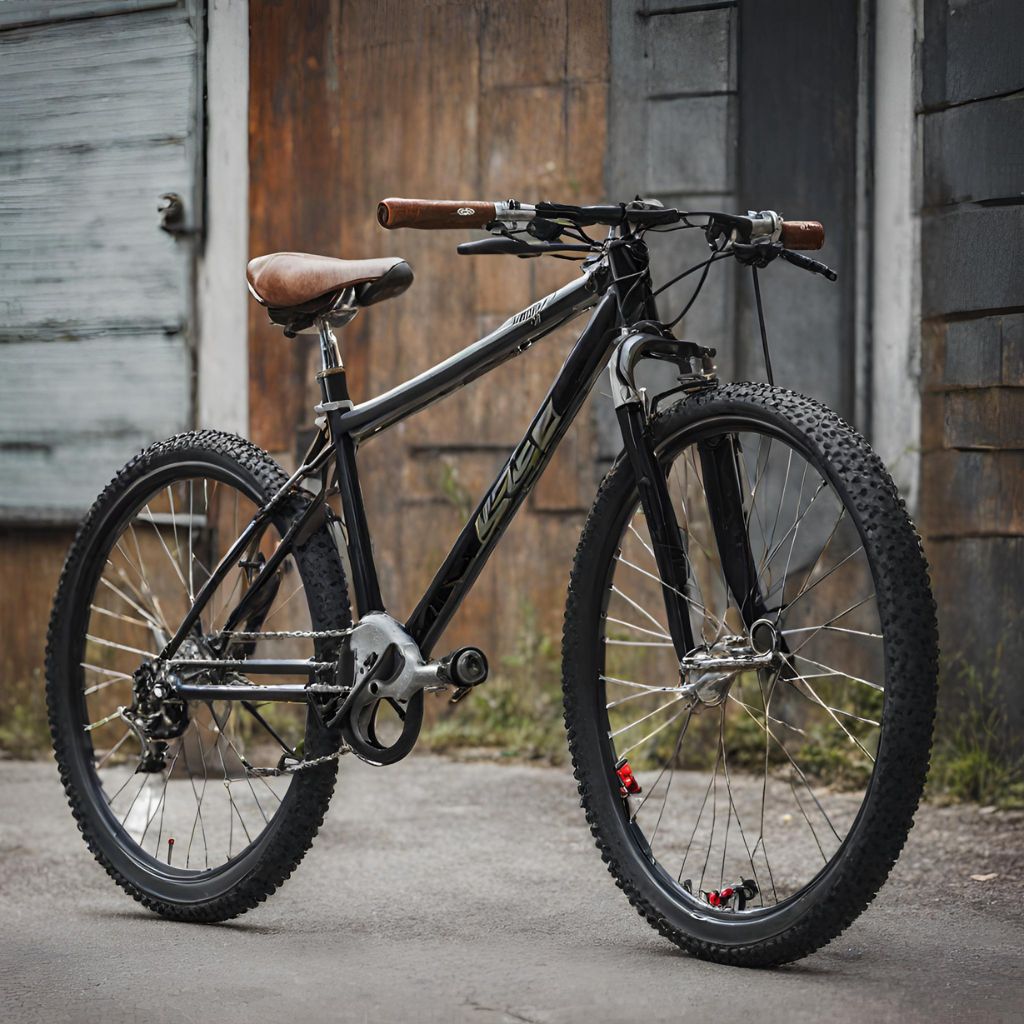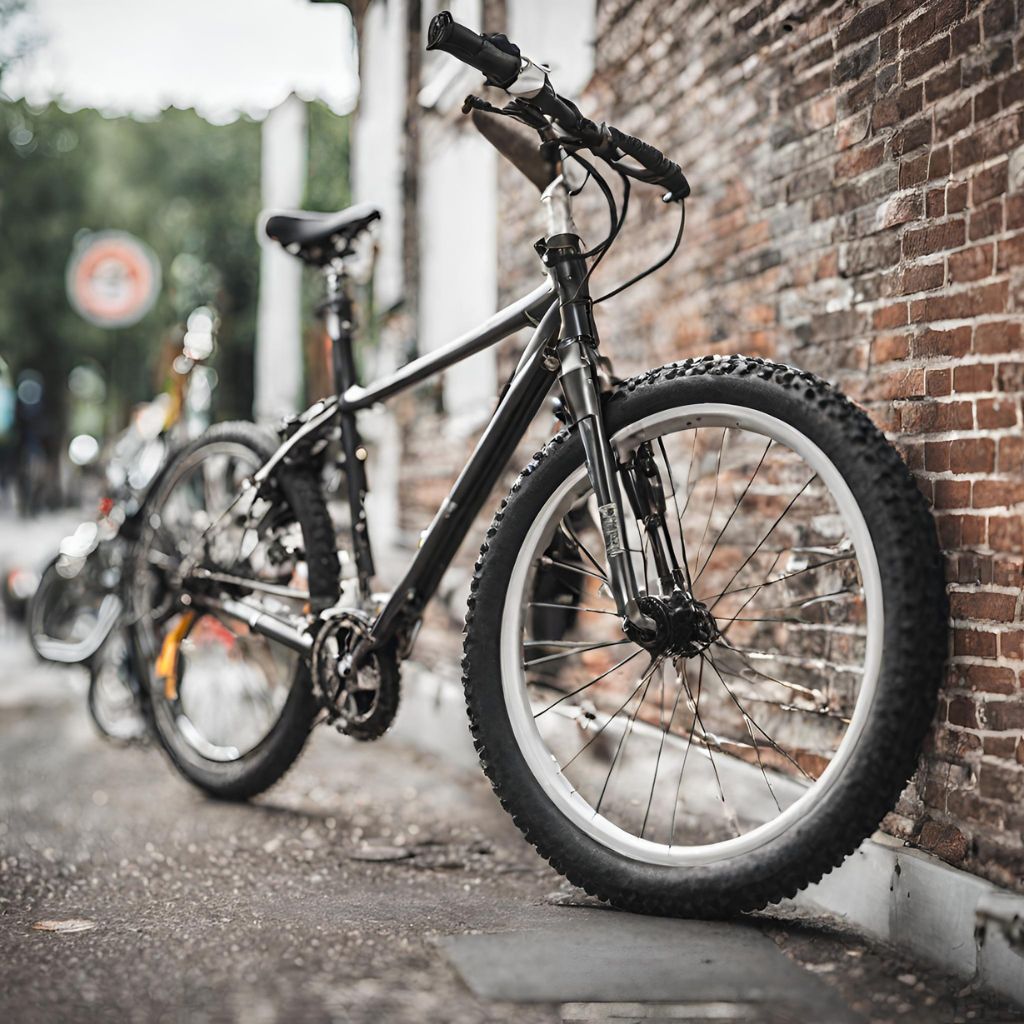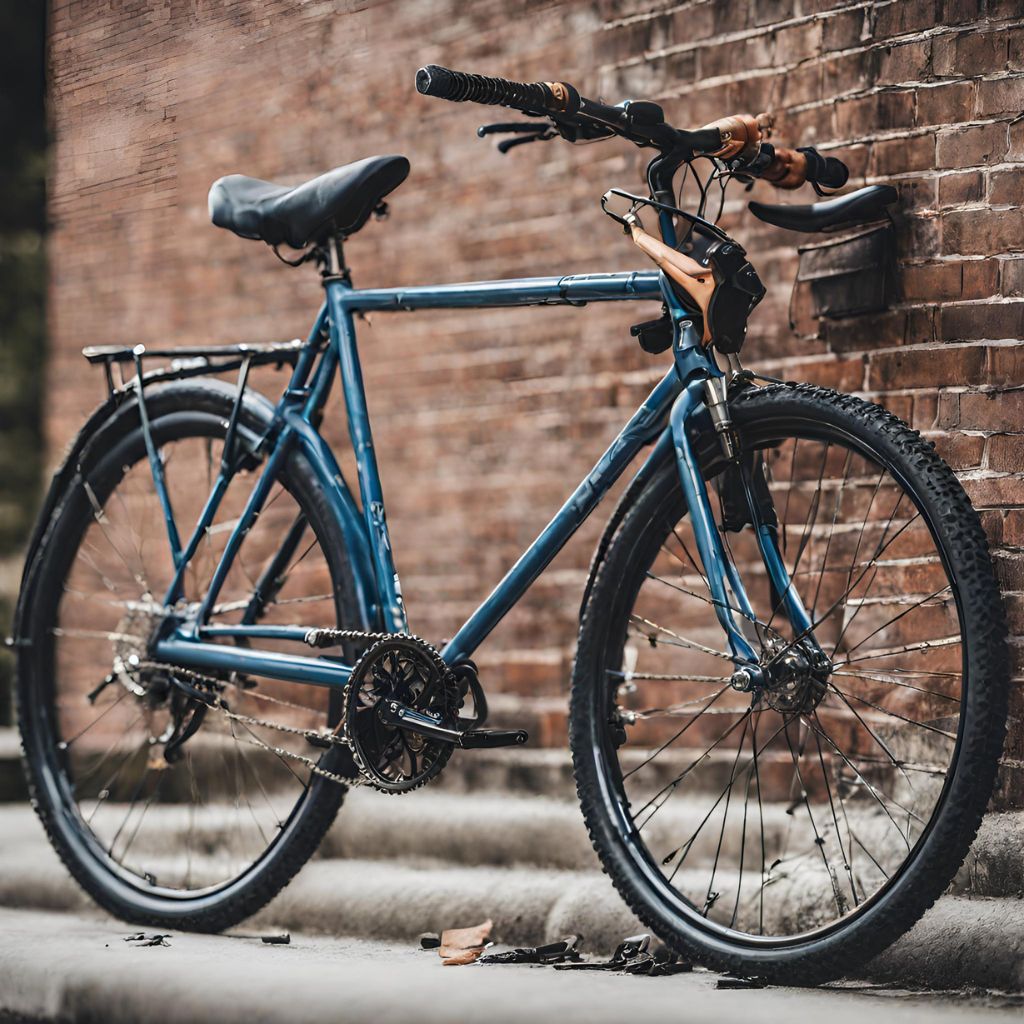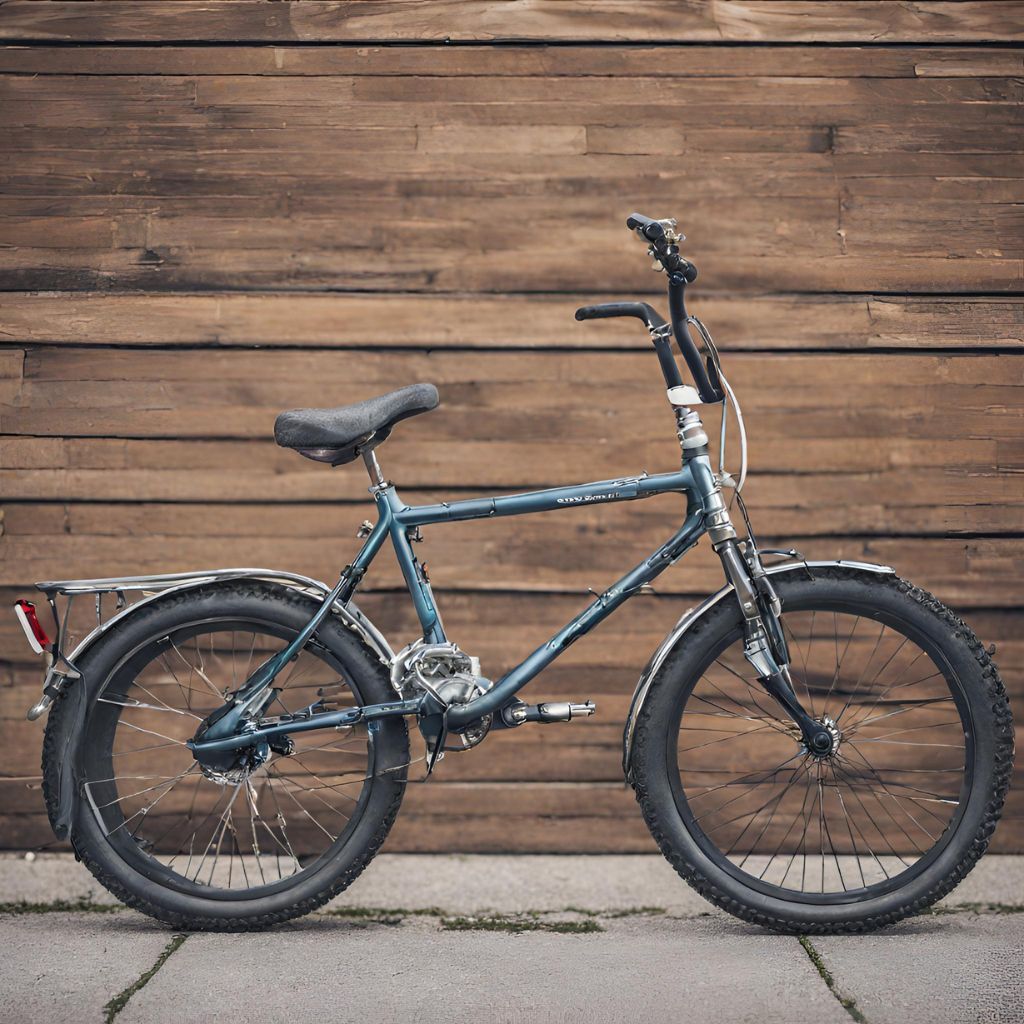When buying a used bike, look for the overall condition and maintenance history. In addition to examining the bike’s frame, tires, and brakes, consider any modifications or signs of wear that may impact its performance and safety.
Buying a second-hand used bike can be a cost-effective way to get your hands on a quality ride, but there are some things to keep in mind before making the purchase. In this post, we will cover everything you need to know when buying a used bike. From understanding the basics of used bikes and why they may be a good option for you, to essential checks that you should perform before finalizing the deal. We will also provide you with questions to ask the seller and red flags to watch out for when inspecting the bike. Stay tuned as we guide you through the process of finding a reliable used bike so that you can make an informed purchase decision.
With a little bit of know-how, you can find a reliable, high-quality second-hand used bike that will serve you well for years to come.

Key Takeaways
- Determining the type of bike you need is crucial before you start your search.
- Research the seller and bike’s history to ensure you’re buying a bike that’s not stolen or problematic.
- Inspect the bike in person to evaluate its condition and identify any potential issues.
- Test ride the bike to ensure it meets your comfort and performance requirements.
- Consider the price and value to avoid overpaying or buying a bike that’s too good to be true.
Research And Preparation
Looking to buy a used bike? Before making a decision, thorough research and preparation are important. Consider factors like condition, price, brand reputation, and test rides to ensure a worthwhile purchase.
Before purchasing a used bike, it is crucial to conduct thorough research and prepare yourself. Here are some important steps to follow:
Determine Your Bike Needs
To start, determine your bike needs and identify the type of bike that suits your preferences. Consider factors such as the purpose of the bike (commuting, mountain biking, road cycling), your skill level, and the terrain you’ll be riding on. By understanding your specific requirements, you can make a more informed decision.
Set A Budget
Setting a budget is essential when buying a used bike. Determine how much you are willing to spend, taking into account the bike’s condition, age, and brand reputation. Keep in mind that while a higher budget might allow you to purchase a bike with better components and performance, a lower budget can still lead to a good deal if you carefully assess the bike’s condition.
Research Different Brands And Models
Next, take the time to research different brands and models of bikes. Look for those known for their durability, reliability, and value retention. Consider reading reviews and seeking recommendations from experienced riders or online cycling communities. Understanding the pros and cons of various brands and models will help you narrow down your options and make a more informed decision.
By following these steps as part of your research and preparation phase, you’ll be equipped with the necessary knowledge and confidence to proceed with buying a used bike. Remember to take your time, ask questions, and thoroughly examine any potential bike to ensure it meets your needs and fits within your budget.

Inspection And Evaluation
When buying a used bike, it’s crucial to thoroughly inspect and evaluate its condition to ensure you’re making a wise investment. This step is essential to avoid any unforeseen issues and costly repairs down the road. Below, we’ll cover the key aspects to focus on during this inspection and evaluation process.
Frame Inspection
One of the first things you should examine when inspecting a used bike is its frame. The frame acts as the skeleton, providing the bike with its strength and stability. Look for any visible signs of damage, such as cracks, dents, or rust. Pay close attention to the joints and welds, as these areas are prone to weaknesses. Additionally, check if the frame is straight by standing behind the bike and ensuring that the wheels align properly with the frame. A damaged or misaligned frame can greatly impact the bike’s performance and safety.
Check For Mechanical Issues
Next, it’s essential to inspect the bike for any mechanical issues that could affect its functionality. Begin by assessing the brakes, both the front and rear. Check if they engage smoothly and bring the bike to a complete stop without any squeaking or grinding noises. Test the gears to ensure they shift seamlessly, without skipping or slipping. Additionally, examine the chain, pedals, and crankset. Look for any signs of excessive wear, rust, or damage. These components play a crucial role in propelling the bike forward, so it’s vital to ensure they are in good working condition.
Evaluate Wear And Tear
The wear and tear of a used bike can provide valuable insights into its overall condition and previous usage. Look closely at the tires for any cracks, punctures, or signs of excessive wear. Check the tread depth to ensure they have enough traction. It’s also essential to examine the handlebars, grips, and saddle. Look out for any tears, looseness, or signs of wear. Additionally, inspect the wheels for any wobbles, loose spokes, or damage. These visual cues will help you determine if the bike has been properly maintained and cared for.
In conclusion, inspection and evaluation are vital when buying a used bike. By thoroughly examining the frame, checking for mechanical issues, and evaluating wear and tear, you can make an informed decision and ensure that the bike you purchase is in good condition and ready for your cycling adventures.
Research the Seller and Bike’s History
When buying a used bike, you need to do your homework to ensure a successful purchase. One of the first things to consider is where to buy the bike. Bike shops sell used bikes, and you can also buy them from private sellers.
If you’re purchasing from a private seller, it’s essential to verify their reputation and trustworthiness. Buying from a reputable bike shop can give you greater assurance of the bike’s quality and condition. Reputable bike shops will typically have their used bikes inspected and repaired before selling them to customers.
Another crucial step is to research the bike’s history. Check if the bike is registered in a bike registry, which can provide information about the bike’s ownership and potential theft history. Additionally, ask the seller about the age of the bike, how it was maintained, and if any repairs were made.
“Checking the bike registry and asking for maintenance history can prevent you from buying a stolen or poorly maintained bike.”
Having a clear understanding of the bike’s history can help you identify any potential issues and make an informed decision.
Tip: Be respectful when negotiating, and try to find a mutually beneficial agreement. Remember that the seller wants to make a sale, and you want a good deal.
Test Ride And Final Considerations
When buying a used bike, it’s essential to test ride it to ensure it meets your requirements. Consider factors such as comfort, performance, and overall condition before making your final decision.
Once you’ve evaluated the bike’s condition and its history, the final step in buying a used bike is to take it for a test ride and consider a few final factors before making your decision. By following these guidelines, you can ensure that you’re getting a bike that meets your needs and expectations.
Take a Test Ride
A test ride is crucial when buying a used bike as it allows you to assess its performance, comfort, and overall handling. Here’s how you can make the most out of your test ride:
- Check the bike’s frame size and ensure it is suitable for your height.
- Inspect the brakes to ensure they are responsive and function properly.
- Test the gears to make sure they shift smoothly without any grinding or skipping.
- Pay attention to the bike’s suspension (if applicable) and check if it provides a comfortable ride on different terrains.
- Observe any unusual noises or vibrations while riding, which could indicate potential mechanical issues.
- Take note of the bike’s overall fit and feel, making sure it is comfortable and suits your riding style.
Consider the Bike’s History
Before finalizing your decision, it’s important to consider the bike’s history to ensure you’re not buying a lemon. Here are a few factors to look into:
- Ask the seller about the bike’s maintenance records, repair history, and any accidents it may have been involved in.
- Check if the bike has undergone any major modifications or upgrades, as this could affect its value and performance.
- If possible, verify the bike’s ownership history through its documentation and make sure there are no outstanding financial obligations.
Negotiate the Price
Once you’re satisfied with the bike’s condition and history, you can move on to negotiating the price. Here are a few tips to help you get the best deal:
- Research the market value of similar used bikes to have a fair idea of what you should be paying.
- Highlight any flaws or necessary repairs the bike may require, which can give you leverage in negotiating a lower price.
- Be prepared to walk away if the seller’s asking price is significantly higher than what you believe the bike is worth.

Negotiate and Request Additional Information
As you consider your options for purchasing a used bike, it’s important to keep in mind that bike shops will typically have a different approach than private sellers. Be prepared to ask questions and gather information about the bike’s history and condition from both types of sellers.
If you notice any potential issues or defects, don’t be afraid to negotiate the price with the seller. This will help ensure that you get a fair deal and that any necessary repairs are taken care of before you take possession of the bike.
Pro Tip: Ask for specific information about the bike, such as its maintenance history and any past accidents or repairs. This will help you make an informed decision about whether the bike is a good fit for your needs.
In addition to negotiating the price, requesting additional information about the bike can help you avoid any surprises down the road. If you’re buying from a private seller, ask to see any relevant documentation about the bike’s ownership and maintenance history.
| Questions to Ask | Information to Gather |
| How long have you owned the bike? | Ownership history |
| Has the bike been in any accidents? | Accident history |
| What kind of maintenance has been done? | Maintenance history |
| Are there any known issues with the bike? | Defects or repairs needed |
Ensure Proper Documentation
Before finalizing the purchase, ensure that you have all the necessary documentation in order. This includes:
- A valid title or ownership transfer document that legally transfers the bike to your name.
- A bill of sale that includes important details like the purchase price, date, and signatures of both the buyer and seller.
- Any maintenance or repair records that were provided by the seller.
Verifying the Serial Number
Verify the serial number to ensure its authenticity and avoid purchasing a stolen bike. Request the bike’s serial number from the seller and conduct an online search on bike registries to check if it has been reported stolen.
By following these final steps and considering all the necessary factors, you can confidently make an informed decision when purchasing a used bike that meets your requirements.
If you’re buying from an online seller, ask about their return policy and review their shipping practices. You want to make sure that the bike will be shipped securely and that you can return it if necessary. If you’re buying locally, arrange a safe location for the exchange and consider bringing a knowledgeable friend or a bike mechanic with you. This can help ensure a smooth and secure transaction.
We recommend insuring the bike to protect your investment. This will give you peace of mind in case anything happens during shipping or after you collect the bike.
By negotiating and requesting additional information, you can ensure that you’re getting a fair deal on a high-quality used bike. Protect your investment by insuring the bike and taking necessary precautions during the transaction process.

Frequently Asked Questions Of What To Look For When Buying A Used Bike?
Why Consider Purchasing a Second-Hand Bike?
Buying a used bike can be a great option for those on a budget or looking to reduce their environmental impact. Second-hand bikes are often much cheaper than new ones and can be just as functional. By purchasing a pre-loved bike, you’re also preventing it from ending up in a landfill.
The Benefits of Our Guide
Our guide to buying a used bike has provided you with valuable insights and tips to make an informed decision on your purchase. We covered the importance of determining the type of bike you need, researching the seller and bike’s history, inspecting the bike in person, test riding the bike, considering the price and value, negotiating and requesting additional information, and ensuring a secure purchase.
How to Start Your Search
Now that you’re equipped with our guide, it’s time to start your search for the perfect second-hand bike. Check out local bike shops, online marketplaces, and classifieds to find options that suit your needs. Don’t forget to use our tips and consider the bike’s history, condition, and value before making your final decision.
Is it Safe to Buy a Second-Hand Bike Online?
When buying a second-hand bike online, ensure you choose a reputable seller with positive reviews. Look for detailed photos of the bike to assess its condition before making a purchase. Consider buying from a local seller to inspect and test ride the bike in person. Research online marketplaces for any reported scams or cautionary tales. Ask for the bike’s serial number to check for theft.
How Do I Choose The Right Size Used Bike?
To choose the right size used bike, measure your inseam and compare it with the bike’s frame size. A properly sized bike ensures a comfortable riding experience.
What Signs Of Wear Should I Look For On A Used Bike?
Inspect the used bike for signs of wear such as rust, dents, and scratches. Check the condition of the tires, brakes, chain, and gears for any damage or excessive wear.
What Should I Ask The Seller About The Used Bike’s History?
Ask the seller about the bike’s maintenance history, the reason for selling, and if it has been involved in any accidents. Also, inquire about the mileage and if any major repairs or replacements have been done.
Conclusion
To make an informed decision when purchasing a used bike, it is important to consider several key factors. Inspecting the bike’s condition, checking for any potential issues, and assessing the price against its value are crucial. Researching the bike’s brand and reputation and taking it for a test ride can also provide valuable insights.
By following these guidelines, you can ensure a smooth and satisfactory buying experience. Choose wisely and enjoy your new ride!
Thanks for reading our guide, and happy purchasing!




Leave a Reply